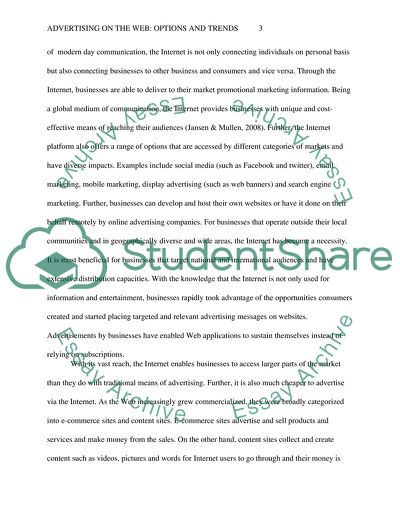Cite this document
(Advertising on the Web: Options and Trends Literature review Example | Topics and Well Written Essays - 2000 words, n.d.)
Advertising on the Web: Options and Trends Literature review Example | Topics and Well Written Essays - 2000 words. https://studentshare.org/information-technology/1853455-advertising-on-the-web-options-and-trends
Advertising on the Web: Options and Trends Literature review Example | Topics and Well Written Essays - 2000 words. https://studentshare.org/information-technology/1853455-advertising-on-the-web-options-and-trends
(Advertising on the Web: Options and Trends Literature Review Example | Topics and Well Written Essays - 2000 Words)
Advertising on the Web: Options and Trends Literature Review Example | Topics and Well Written Essays - 2000 Words. https://studentshare.org/information-technology/1853455-advertising-on-the-web-options-and-trends.
Advertising on the Web: Options and Trends Literature Review Example | Topics and Well Written Essays - 2000 Words. https://studentshare.org/information-technology/1853455-advertising-on-the-web-options-and-trends.
“Advertising on the Web: Options and Trends Literature Review Example | Topics and Well Written Essays - 2000 Words”. https://studentshare.org/information-technology/1853455-advertising-on-the-web-options-and-trends.


